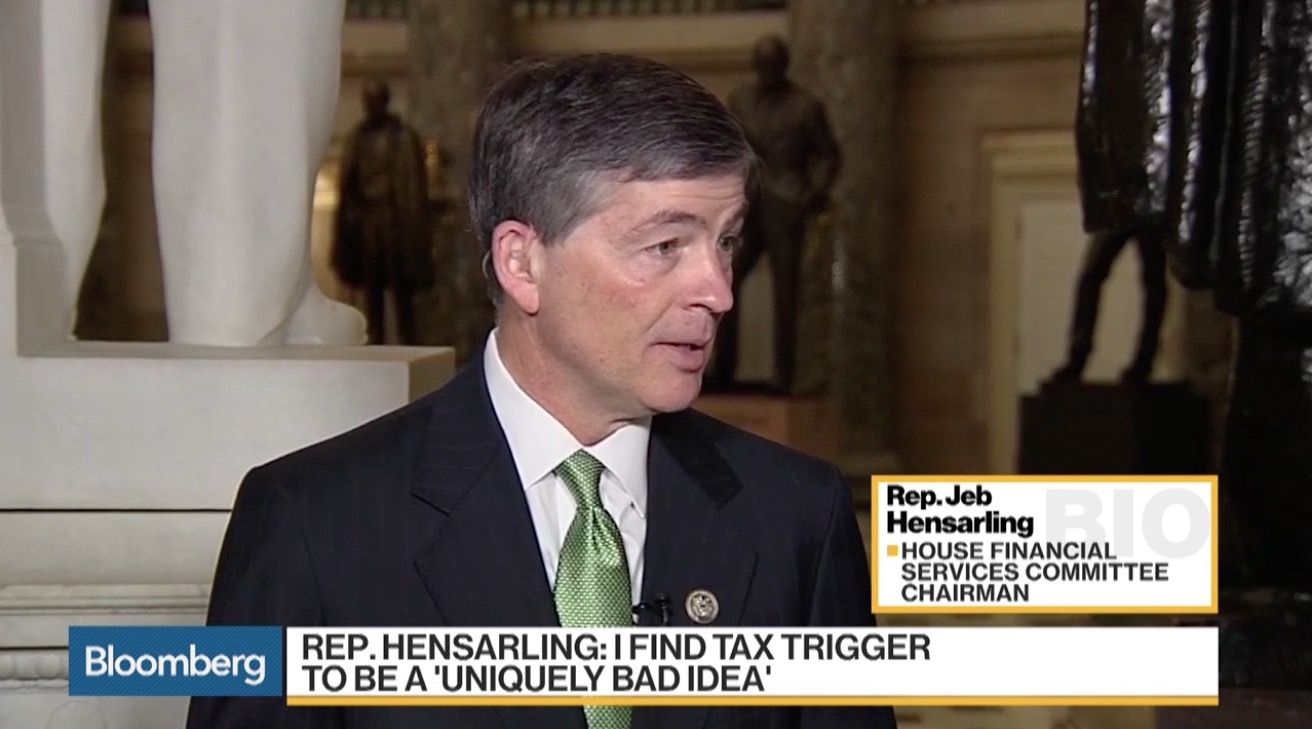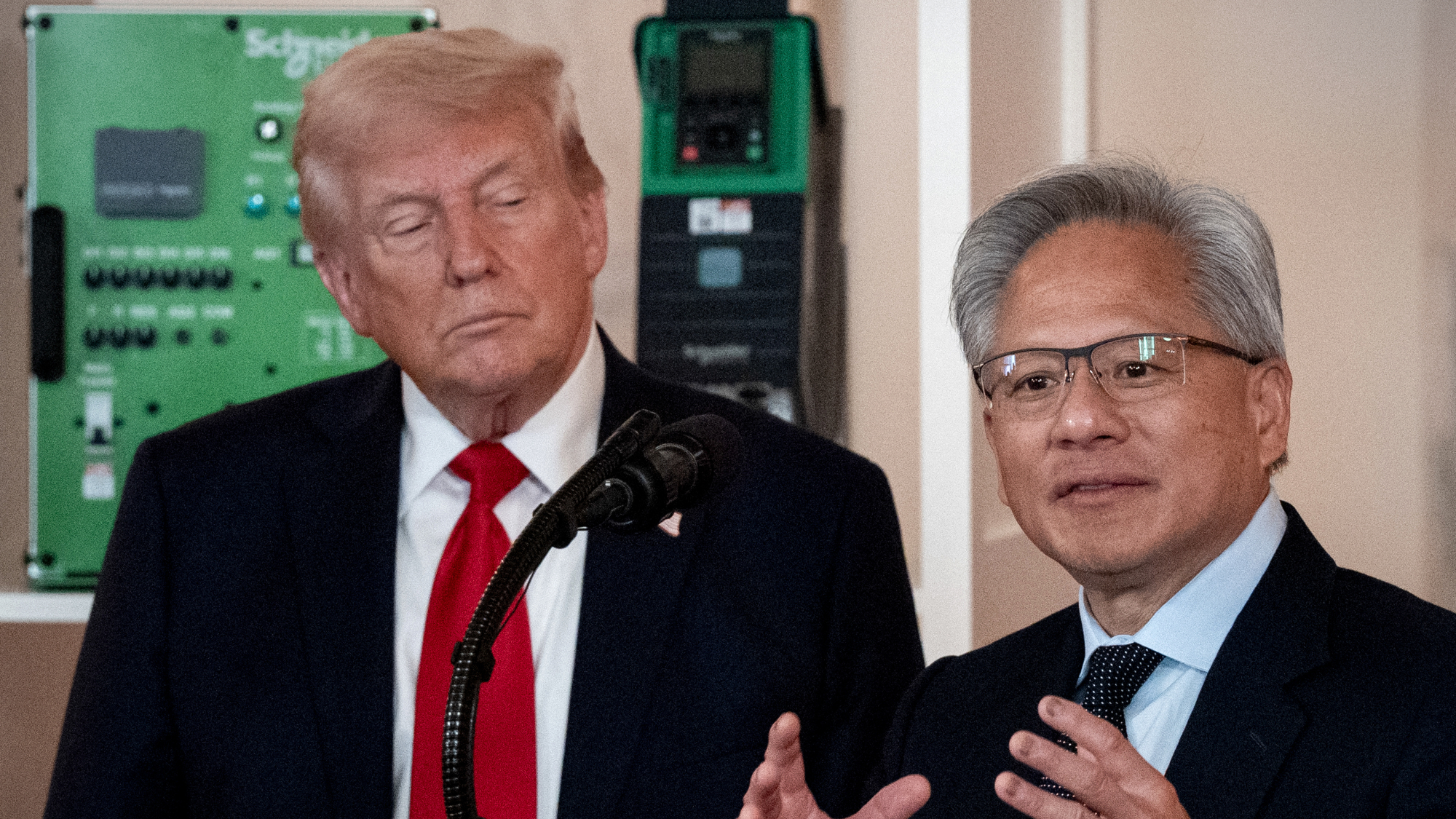House GOP banking chairman waves off tax cut deficit concerns, pivots to entitlement reform


On Thursday, the congressional tax scorekeepers at the Joint Committee on Taxation projected that the Senate Republican tax plan would add $1 trillion to the federal deficit, using "dynamic scoring" that accounts for economic growth. "This is the standard by which the GOP has insisted that fiscal legislation should be judged" for 40 years now, notes New York Times business reporter Binyamin Appelbaum. It wasn't the result deficit-wary Republicans wanted, and it led to an overnight rewrite of the tax plan — that plus a parliamentary disqualification of a proposed "trigger" to raise taxes if the $1.63 trillion in tax cuts don't pay for themselves.
Earlier Thursday, House Financial Services Committee Chairman Jeb Hensarling (R-Texas) dismissed the "trigger" idea. "The bottom line is, we'll be able to fill any deficit hole with additional revenues, and we basically saw the same during the Reagan tax cuts, frankly the Kennedy tax cut, you can even go all the way back to the Coolidge tax cut," he told Bloomberg's Kevin Cirilli. "We will be able to raise more revenues, and if not, as a Republican, the answer would be less spending, not more taxes."
The national debt is "the greatest crisis that receives almost no attention in Washington," Hensarling added, elaborating on the spending cuts. "What we need to do is, obviously, reform current entitlement programs for future generations. That's a heavy political lift, but so far we haven't found any help from Democrats."
The Week
Escape your echo chamber. Get the facts behind the news, plus analysis from multiple perspectives.

Sign up for The Week's Free Newsletters
From our morning news briefing to a weekly Good News Newsletter, get the best of The Week delivered directly to your inbox.
From our morning news briefing to a weekly Good News Newsletter, get the best of The Week delivered directly to your inbox.
On Wednesday, Sen. Marco Rubio (R-Fla.) had similarly suggested cutting future Medicare and Social Security benefits as the next step after passing tax cuts. Calvin Coolidge's tax cuts in 1926, it should be noted, "would substantially contribute to the causes of the Great Depression," the precursor to entitlements, Great Depression historian Robert McElvaine wrote in The Washington Post on Thursday. "Yet the plain fact that the trickle-down approach has never worked leaves Republicans unfazed." You can read more at the Post.
A free daily email with the biggest news stories of the day – and the best features from TheWeek.com
Peter has worked as a news and culture writer and editor at The Week since the site's launch in 2008. He covers politics, world affairs, religion and cultural currents. His journalism career began as a copy editor at a financial newswire and has included editorial positions at The New York Times Magazine, Facts on File, and Oregon State University.
-
 How weight-loss jabs are changing the way we eat
How weight-loss jabs are changing the way we eatIn The Spotlight Anti-obesity drugs have been a boon for Babybel but are supermarkets ready for a slimmed-down Christmas?
-
 Sudoku hard: December 18, 2025
Sudoku hard: December 18, 2025The daily hard sudoku puzzle from The Week
-
 Crossword: December 18, 2025
Crossword: December 18, 2025The daily crossword from The Week
-
 Unemployment rate ticks up amid fall job losses
Unemployment rate ticks up amid fall job lossesSpeed Read Data released by the Commerce Department indicates ‘one of the weakest American labor markets in years’
-
 US mints final penny after 232-year run
US mints final penny after 232-year runSpeed Read Production of the one-cent coin has ended
-
 Warner Bros. explores sale amid Paramount bids
Warner Bros. explores sale amid Paramount bidsSpeed Read The media giant, home to HBO and DC Studios, has received interest from multiple buying parties
-
 Gold tops $4K per ounce, signaling financial unease
Gold tops $4K per ounce, signaling financial uneaseSpeed Read Investors are worried about President Donald Trump’s trade war
-
 Electronic Arts to go private in record $55B deal
Electronic Arts to go private in record $55B dealspeed read The video game giant is behind ‘The Sims’ and ‘Madden NFL’
-
 New York court tosses Trump's $500M fraud fine
New York court tosses Trump's $500M fraud fineSpeed Read A divided appeals court threw out a hefty penalty against President Trump for fraudulently inflating his wealth
-
 Trump said to seek government stake in Intel
Trump said to seek government stake in IntelSpeed Read The president and Intel CEO Lip-Bu Tan reportedly discussed the proposal at a recent meeting
-
 US to take 15% cut of AI chip sales to China
US to take 15% cut of AI chip sales to ChinaSpeed Read Nvidia and AMD will pay the Trump administration 15% of their revenue from selling artificial intelligence chips to China
